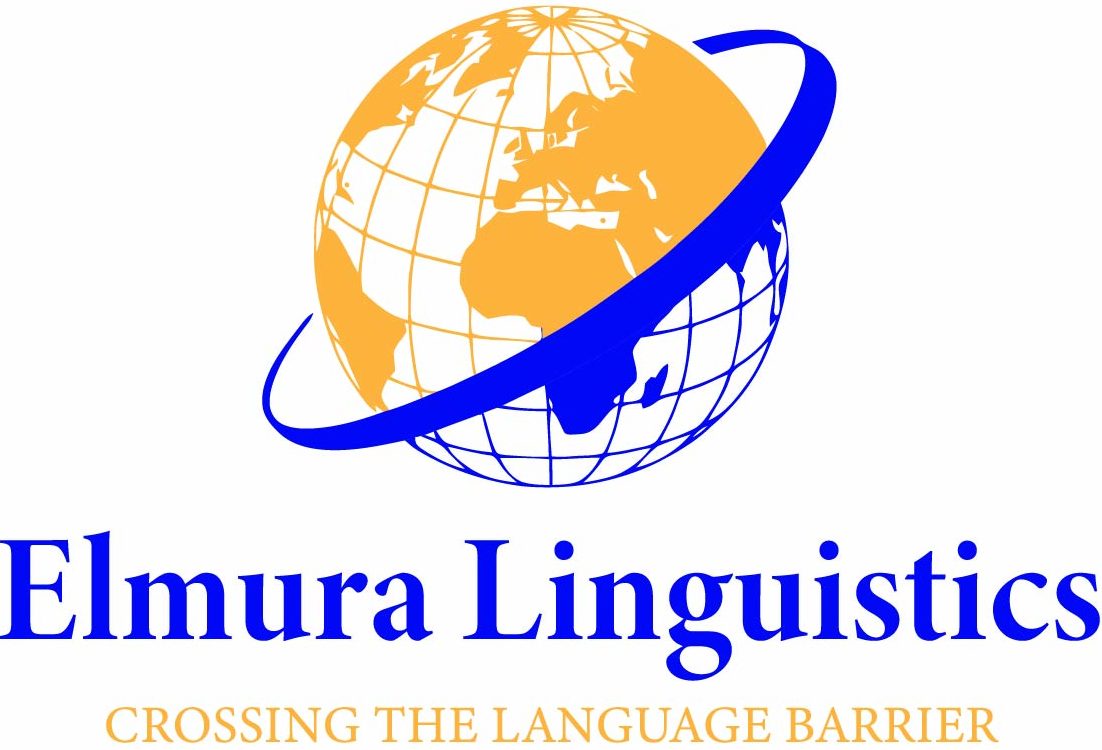Translation and localization are often used interchangeably. But they’re not the same. As language professionals, we know the difference matters – especially when expanding into new markets. Translation transfers meaning between languages. Localization adapts your content for the culture, customs, and expectations of your audience.
In this guide, we’ll break down what localization really involves, how it compares to translation, and when to choose each. You’ll also see real examples and practical insights based on our experience at Elmura Linguistics.
Whether you’re building a multilingual website, launching a product abroad, or translating marketing content, this article will help you choose the right path forward.
Table of Contents
ToggleWhat Is Translation?

Translation is the process of converting written or spoken content from one language into another. The goal is to preserve meaning, tone, and intent as accurately as possible. A well-executed translation reads naturally to the target audience while remaining faithful to the source.
Professional translation requires more than just fluency. It demands deep knowledge of grammar, syntax, terminology, and subject matter. Legal, medical, and technical texts often rely on specialist translators who understand industry-specific language.
Most business needs, such as user manuals, product specifications, legal contracts, or internal documentation, can be met with translation alone. In these cases, the priority is accuracy and clarity, not cultural adaptation.
Translation lays the foundation for multilingual communication. But for brands looking to connect with audiences on `a deeper level, translation alone may not be enough.
What Is Localization?

Localization meaning: the process of adapting content to fit cultural, linguistic, and functional expectations of a specific locale.
Localization takes translation a step further. It adapts content not just to a different language, but to a specific culture, region, and audience. This includes adjusting visuals, formatting, units of measurement, currencies, date formats, and even tone of voice.
While translation ensures that words make sense, localization ensures that everything feels natural to the local audience. A localized website or app doesn’t just speak the language-it aligns with cultural expectations, social norms, and user behavior.
For example, localizing content for Spanish speakers in Mexico differs from doing so for Spain or Argentina. Each market has distinct preferences, dialects, and expectations. Localization accounts for these variations to deliver a seamless user experience.
Brands that invest in localization are more likely to build trust, improve engagement, and avoid cultural missteps. It is an essential process for global marketing, software releases, e-commerce, and customer support.
Translation is part of localization, but localization is a broader strategy. It ensures your message resonates, not just reaches.
Key Differences Between Translation and Localization
Though closely related, translation and localization serve different purposes. Understanding how they differ helps you choose the right approach for your content.
| Aspect | Translation | Localization |
| Scope | Converts text from one language to another | Adapts entire content to a specific locale |
| Focus | Linguistic accuracy | Cultural relevance and user experience |
| Elements involved | Text | Text, visuals, layout, symbols, currency, formatting |
| Use case | Manuals, legal documents, technical texts | Websites, apps, games, marketing materials |
| Cultural adaptation | Minimal or none | Extensive |
| Process complexity | Relatively straightforward | Requires more coordination and cross-functional expertise |
For companies scaling internationally, relying on translation alone may limit the impact. Localization helps bridge not only language, but the entire user context.
When Is Translation Enough?

Translation is the right choice when the goal is to convey information clearly and accurately without requiring cultural adaptation. It works best for content that is universal, technical, or standardized.
Some common examples include:
- User manuals and technical documentation
- Legal contracts and compliance documents
- Academic papers and scientific journals
- Internal corporate policies
- Standardized training materials
In these cases, the primary concern is precision. The audience needs to understand the information, not feel emotionally connected to it. There’s little room for ambiguity, and minimal risk of cultural misalignment.
However, even when translation is sufficient, quality matters. Using professional linguists ensures the final result is accurate, consistent, and reflects industry-specific terminology.
When Localization Is Essential
Localization becomes critical when your content is designed to engage, persuade, or resonate with a specific audience. It’s about more than just translating words – it’s about building familiarity, trust, and relevance.
You need localization when:
- Launching websites or mobile apps in new markets
- Running international marketing campaigns
- Developing brand messaging, slogans, or product names
- Creating culturally rich content with local references or context
- Handling currencies, legal requirements, or regional formats
- Designing visuals, icons, or layouts for a global audience
Industries where localization delivers the greatest impact include:
- Software & SaaS: User interfaces, help docs, and onboarding flows must feel intuitive in every language and locale.
- E-commerce: Shoppers expect local currency, region-specific promotions, and familiar checkout experiences.
- Healthcare & Life Sciences: Patient information and medical tools must be both accurate and culturally appropriate.
- Gaming: Players demand immersive experiences with localized dialogue, humor, and references.
- Finance & Legal: Content must comply with regional regulations while remaining accessible and trustworthy.
- Education & eLearning: Platforms must adapt to linguistic and cultural preferences to increase engagement and learning outcomes.
Even subtle cultural missteps can hurt credibility or confuse users. A slogan that works in one language may fall flat – or even offend – in another. Localization helps brands avoid these pitfalls and build stronger connections.
Ultimately, localization ensures your brand feels native to each market. It shows users that your product or message was created with their needs in mind – not just translated from somewhere else.
How Localization Drives Business Results
Localization is not just a linguistic decision. It’s a strategic investment that directly impacts growth, revenue, and market positioning. For executive teams focused on global expansion, localization is often the difference between market entry and market success.
1. Accelerates Market Penetration
Localized content removes entry barriers. It helps new audiences immediately understand your product, trust your messaging, and take action. A localized onboarding experience, for example, improves product adoption rates and shortens the time to value.
2. Increases Conversion and Retention
Consumers are far more likely to engage with brands that speak their language and understand their cultural context. Localization builds trust and reduces friction, leading to better results across the funnel.
This behavior directly translates to increased conversions, higher customer satisfaction, and longer retention, especially in high-competition industries like software, finance, and e-commerce.
3. Protects Brand Reputation Globally
Missteps in tone, imagery, or language can damage your brand in a new market. Localization ensures cultural sensitivity and consistency, helping global brands maintain credibility and trust across all regions.
4. Improves Operational Efficiency
Upfront localization reduces the need for last-minute fixes, support escalations, and fragmented content maintenance. Centralizing the localization process creates scalable systems, reducing long-term costs and delays.
5. Delivers ROI That Outpaces Translation Alone
While localization requires a higher initial investment than translation, the long-term returns are stronger. Localized campaigns convert better. Localized platforms retain users longer. And localized documentation reduces support costs.
In short, localization pays for itself, not only through improved customer experience but through measurable gains in revenue, market share, and operational scale.
Brand Success Stories with Localization

Understanding the nuances between translation and localization becomes much clearer when seen in practice. Below are real-world cases that illustrate how businesses adapted language, culture, and experience to connect meaningfully with global audiences.
| Brand / Example | Translation Only (What Was Done) | Localization (What Was Added or Adapted) |
| Spotify | Translated playlists and marketing content into local languages | Created region-specific playlists, celebrated local holidays, and tailored ad campaigns for city-level targeting |
| Notion | Translated app UI and help content into multiple languages | Localized entire digital experience including templates, support content, and UX tweaks for each market |
| KitKat (Japan) | Could have simply translated “Have a break, have a KitKat” | Adapted slogan to “Kitto Katsu” (a play on “surely win” in Japanese), aligning with local cultural sentiment |
| Coca-Cola (China) | Translated product information | Renamed brand to “Kekou Kele” meaning “delicious happiness”, respecting cultural tone and emotional appeal |
| E-commerce Example | Translated product descriptions and checkout instructions | Localized currency, date/time formats, payment methods, sizing charts, and imagery for regional relevance |
Translation gets the message across. Localization ensures that the message resonates culturally, emotionally, and contextually, turning communication into connection.
How Localization and Translation Work Together and When to Use Them

Translation and localization often work hand in hand, but they serve different purposes. Knowing when to use one or both depends on the content’s role in your business.
Think of translation as the baseline. Localization builds on it to ensure the message not only makes sense, but performs. Even with the right strategy, localization efforts often hit familiar roadblocks. These range from inconsistent language to technical constraints. Recognizing these challenges early allows businesses to plan ahead and adopt scalable solutions. To provide a clearer overview, here are the five most common localization challenges and how to address them: In today’s connected world, effective global communication goes far beyond simple translation. Brands that invest in localization don’t just get their message across – they build relationships, foster trust, and drive deeper engagement with every audience they reach. Whether you’re launching a product, expanding into new markets, or refining your customer experience, precision matters. Localization is the key to creating content that resonates – and to unlocking new growth opportunities in an increasingly competitive global landscape. Don’t settle for literal translations. Work with experts who understand the nuance behind every word. We offer professional translation and localization services tailored to your industry, audience, and goals. From UI strings to marketing copy, we ensure your content connects and performs – everywhere. 👉 Get in touch with Elmura Linguistics and unlock the full potential of your global brand.
Localization delivers relevance.Use Translation When:
Use Localization When:
Common Localization Challenges and How to Overcome Them

Challenge
Why It Happens
How to Solve It
Inconsistent Terminology
Different translators interpret terms differently across platforms or campaigns.
Use a centralized glossary and maintain a detailed style guide.
Broken Layouts in the UI
Translated text may be longer or follow a different direction, breaking the design.
Design with flexibility and support for variable text lengths and RTL scripts.
Cultural Disconnects
Visuals, idioms, or humor do not translate well and may offend or confuse users.
Work with native reviewers and culturally aware translators.
Delayed Launch Timelines
Manual steps and lack of coordination delay releases.
Adopt automated workflows and translation management tools.
Scaling Without Losing Quality
As content volume grows, maintaining consistency becomes difficult.
Use quality checks, linguistic review, and in-context validation.
Frequently Asked Questions (FAQ)
Conclusion





